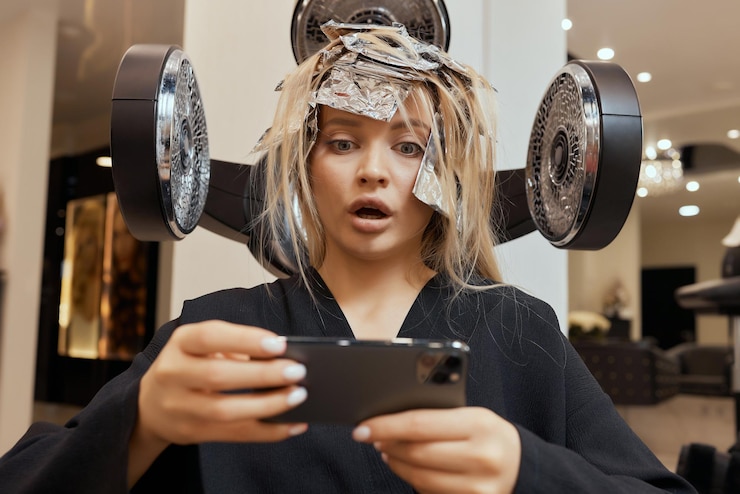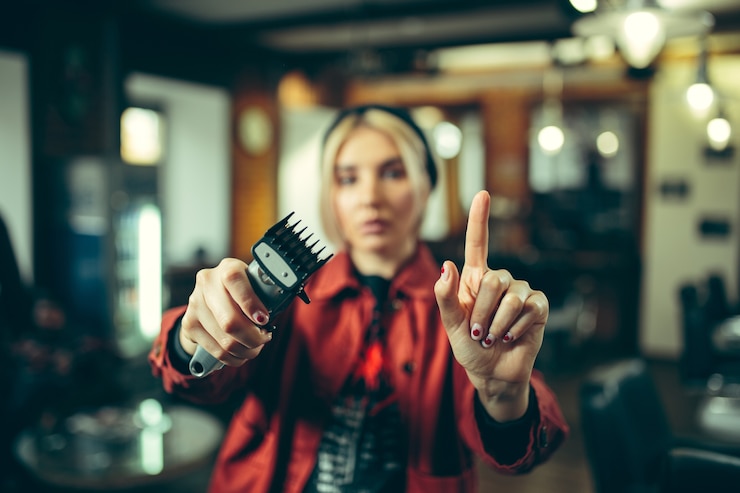
Electronic salons have become an essential part of modern beauty and grooming industries, integrating technology into traditional salon services. From automated hair treatments to advanced skincare devices, electronic salons offer a range of high-tech solutions. However, like any technology-driven industry, electronic salons encounter several common problems that can affect efficiency, customer satisfaction, and overall business performance.
In this article, we will explore the most common issues faced in electronic salons, provide solutions to fix them, and offer expert tips for salon owners to maintain smooth operations. Whether you are a salon owner, technician, or a customer, understanding these problems and their solutions can help improve your experience with electronic salon technology.
Malfunctioning Salon Equipment and How to Troubleshoot It
One of the biggest challenges in an electronic salon is malfunctioning equipment. Hair dryers, laser machines, LED therapy devices, and other electronic tools often suffer from wear and tear, leading to operational failures. Malfunctions can stem from electrical faults, software glitches, or improper maintenance.
How to Fix It:
- Regular Maintenance: Conduct routine inspections and servicing of all devices to prevent breakdowns.
- Use Voltage Regulators: Many electronic salon tools are sensitive to power fluctuations. Installing voltage regulators can protect them from damage.
- Follow Manufacturer Guidelines: Always use devices according to the manufacturer’s recommendations, including proper cleaning, storage, and usage.
- Call a Professional: If a device stops working unexpectedly, consult a certified technician instead of attempting DIY repairs, which might void warranties.
Power Outages and Their Impact on Salon Services

Electronic salons heavily depend on a stable power supply to run their devices smoothly. Power outages or fluctuations can disrupt services, lead to loss of customer trust, and even damage sensitive equipment.
How to Fix It:
- Invest in Backup Power Sources: Installing an uninterruptible power supply (UPS) or a generator can keep essential devices running during outages.
- Use Power Surge Protectors: These help protect electronic devices from sudden power spikes.
- Check Electrical Wiring Regularly: Old or faulty wiring can contribute to power disruptions. Have an electrician inspect the system periodically.
- Schedule Non-Essential Services Wisely: Try to schedule power-intensive services during off-peak hours when electricity demand is lower.
Software Glitches in Digital Booking Systems
Many salons use online booking systems to manage appointments efficiently. However, software bugs, system crashes, or connectivity issues can disrupt scheduling, leading to appointment mismatches and frustrated customers.
How to Fix It:
- Keep Software Updated: Ensure that booking software is updated regularly to avoid compatibility issues and security vulnerabilities.
- Have a Manual Backup System: In case of a software failure, maintain a written record of appointments to avoid chaos.
- Use Cloud-Based Systems: Cloud-based appointment scheduling reduces the risk of data loss and allows remote access to bookings.
- Hire IT Support: Having an IT specialist on call can help resolve software-related problems promptly.
Poor Ventilation and Overheating of Electronic Devices
Salon environments often have multiple devices running simultaneously, generating heat and sometimes leading to overheating of machines and discomfort for customers.
How to Fix It:
- Improve Ventilation: Install exhaust fans and air conditioning to maintain a comfortable temperature.
- Use Heat-Resistant Surfaces: Placing electronic tools on heat-resistant mats prevents overheating and potential fire hazards.
- Avoid Overloading Circuits: Running multiple high-power devices on a single outlet can cause overheating and circuit failures. Distribute electrical loads properly.
- Clean Air Filters Regularly: Many electronic devices, such as laser machines and hair dryers, have air filters that should be cleaned to prevent overheating.
Customer Dissatisfaction Due to Device Inefficiency
Customers expect high-quality results from electronic salon services. If a device fails to deliver the promised results, it can lead to customer complaints and negative reviews.
How to Fix It:
- Train Staff Properly: Employees should know how to use electronic tools effectively to maximize efficiency.
- Use High-Quality Devices: Investing in professional-grade equipment rather than cheap alternatives ensures better performance.
- Offer Compensation for Failures: If a device malfunctions and affects a customer’s treatment, offering discounts or free follow-up services can maintain customer loyalty.
- Regularly Upgrade Equipment: Keep up with the latest technology to provide customers with improved experiences and better results.
Hygiene Issues with Electronic Salon Equipment
Unclean equipment can lead to bacterial infections, skin reactions, and serious health issues for customers. This is especially critical for tools like laser hair removal machines, microdermabrasion devices, and electric razors.
How to Fix It:
- Sterilize Tools After Each Use: Use disinfectant wipes, UV sterilizers, or alcohol-based cleaning solutions to maintain hygiene.
- Follow Health Regulations: Adhere to hygiene guidelines set by health authorities to ensure customer safety.
- Educate Staff on Proper Cleaning Methods: Employees should be trained on how to clean and maintain devices correctly.
- Use Disposable Attachments: Whenever possible, use disposable parts for devices like razors and brushes to reduce contamination risks.
Difficulty in Finding Trained Technicians

As electronic salons use advanced tools, finding well-trained staff who can operate them efficiently is a common challenge.
How to Fix It:
- Invest in Staff Training: Regular workshops and training sessions can improve the skills of existing employees.
- Hire Technicians with Certifications: Look for staff members with specialized certifications in handling electronic salon equipment.
- Provide Competitive Salaries: Offering good salaries and benefits can attract skilled professionals.
- Use Online Learning Platforms: Employees can take online courses to enhance their knowledge of salon technologies.
Frequently Asked Questions (FAQs)
1. What are the most common electronic salon tools that require frequent maintenance?
Hair dryers, laser hair removal machines, microdermabrasion devices, LED therapy tools, and electric massagers require regular maintenance to function efficiently.
2. How often should electronic salon equipment be serviced?
Ideally, electronic devices should be serviced every three to six months, depending on usage. Regular maintenance helps prevent breakdowns and extends equipment life.
3. Can I repair my salon equipment myself?
While minor troubleshooting can be done, it’s best to contact a professional technician for repairs to avoid voiding warranties or causing further damage.
4. What should I do if my booking system crashes?
Keep a manual backup of appointments, try restarting the software, check for updates, and contact your software provider for support.
5. How can I ensure the safety of my electronic salon tools?
Use surge protectors, keep devices clean, follow manufacturer guidelines, and ensure regular maintenance.
Conclusion
Running an electronic salon comes with its fair share of challenges, from equipment malfunctions to software glitches and hygiene concerns. However, with proper maintenance, staff training, and the right technological solutions, these problems can be effectively managed.
By taking proactive steps to prevent breakdowns, ensuring power stability, and maintaining high hygiene standards, salon owners can provide a seamless experience for their clients. Investing in quality equipment, regular training, and customer service strategies will not only improve business efficiency but also build long-term customer trust.
As the beauty industry continues to evolve, staying ahead of technological advancements and addressing these common issues will help electronic salons thrive in the competitive market.